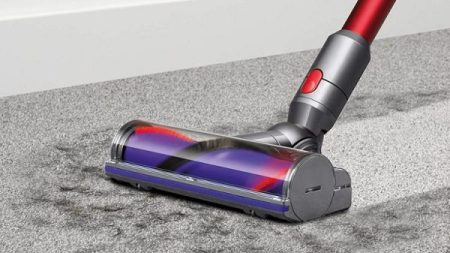Here are some things that users concerned about privacy issues in Windows 10 can do to protect themselves.
There are concerns that Windows 10 collects too much personal information from users. If you think that Microsoft’s operating system is beyond privacy, or if you want to protect your privacy, there are steps you can take. In just a few minutes, you can protect your personal information. Here’s how.
For reference, this article was for Windows 10, the May 2020 update, version 2004. If you have an older version of Windows 10, there will be a few differences.
Turn off ad tracking
At the very top of many people’s privacy concerns is the data that is collected when browsing the web. This information creates a personal interest profile that is used by various companies for advertising purposes. Windows 10 does this using advertising id. ID collects information about users not only when browsing the web, but also when using Windows 10 apps.
If desired, the user can turn off the corresponding advertising ID. Launch the Windows 10 Settings app (click the Start button at the bottom left of the screen, then click the gear-shaped settings icon), and go to Personal Information> General .
A list of choices is displayed under the heading Change privacy options. The first is to control the advertisement ID. Move the slider from On to Off. The ads are still running, but they become generic ads, not targeted ads, and interests are no longer tracked.
To prevent users from being tracked online when using Windows 10, and to turn off targeted advertising by Microsoft using information about users in another way , go to the Ads Settings session on the Microsoft Privacy Dashboard . Log in to your Microsoft account at the top of the page.
Then, go to the ‘View Ads of Interest’ session at the top of the page and move the slider from On to Off. Then, move the slider from On to Off, down to the’View personalized ads in browser’ session. Go to all browsers you use and make sure that the “Show personalized ads in browser” slider is set to Off.
Also Read: How To Protect Your Privacy In Windows 10
Turn off location tracking
Wherever you go, Windows 10 knows you’re there. Some people don’t mind this. This is because the operating system helps to provide relevant information such as the weather in the user’s area and which restaurants are nearby. But if you don’t want Windows 10 to track your location, you can specify to stop it.
Launch the Settings app and go to Personal Information> Location . Click Change under “Allow access to this device’s location,” and on the screen that appears, move the slider from On to Off. This will turn off all location tracking features for all users on your PC.
You don’t have to run or disable them all. You can turn off location tracking on a per-app basis. If you want to use your location only for some apps and not others, make sure location tracking is turned on, then scroll down to the “Choose an app that can use the exact location” session. You can see a list of all apps that can use your location. For apps that you want to allow use of your location, move the slider to On, and apps that don’t, move it to Off.
Even if you turn off location tracking, Windows 10 keeps track of your past location. To clear your location history, go to your privacy dashboard, scroll down to your location activity session, click View & clear location activity, and delete all or part of your location history.
There is more you can do to protect your privacy. For more information, see the article “More Transparent and Easier” Learn about Windows 10 Creators Update Privacy Settings .
Also Read: 3 Ways to Open PST File Without Office Outlook Windows 10
Turn off the timeline
With Timeline, you can open files started on your Windows 10 PC as well as any other Windows device you have. For example, you can switch between a desktop and a laptop, and on each computer you can resume activities that you started on both PCs.
To do this, Windows needs to collect information about every activity on each computer. It’s easy to turn off the timeline if you’re worried about that. To turn off the timeline, go to Settings>Privacy>Activity History and uncheck the boxes next to’Save my activity history to this device’ and’Send my activity history to Microsoft’.
Now Windows 10 no longer collects information about activity. However, it still keeps information about previous activities and displays them in the timeline on all PCs. To remove previous information, click on’Manage my Microsoft account activity data’ in the’Clear activity history’ session on the screen. This takes you to Microsoft’s personal information dashboard, where you can erase your data. How to delete personal information using the personal information dashboard will be described later.
Limit Cortana
Cortana is a somewhat useful digital assistant, but using it has a trade-off. To get the job done well, Cortana needs to know about the user, such as home location, work, rush hour, and route.
If you are concerned that this will compromise your privacy, there are a few ways you can limit the information Cortana collects about you. However, if you want to use your digital assistant even a little, there are some information you need to share with Cortana (cortana does not support Korean, so domestic users are not. Editor’s Note). When you click Revoke and log out, you’re signed out of Cortana, your chat history is cleared, and Cortana no longer tracks information like your location or connects with calendars, emails, contacts, and other apps and services. But you can’t use Cortana either. The next time you log in, Cortana will track you and connect with all services.
To clear only the chat history and remain logged in to Cortana, click Clear in the chat history session. Your chat history will be deleted, but once you start using Cortana, your chat history will build up once again.
To clear other information from Cortana, click Open in the’Clear Data’ session. This will take you to your personal information dashboard. Scroll down to’Cotana’s Notebook’ and click Edit Cortana Data. To delete the data Cortana has collected about you, click Clear Cortana Data on the right side of the screen. This erases the current data, but collects it again once you start using it.
For reference, the privacy dashboard for the entire Cortana session is useless and doesn’t use previous versions of Windows 10 except for clearing the data. These are the privacy details and data controls related to Cortana’s old laptop features that no longer exist in Windows 10 2004.
Avoid Microsoft Accounts Using Local Accounts
When you log in to Windows 10 using your Microsoft account, you can sync settings with all your Windows devices. For example, if you change settings on your desktop PC, the changes will be made on your laptop the next time you log in.
However, users may not want Microsoft to store information about themselves. And you may want to disconnect as much as possible with everything Microsoft stores about users. In this case, your best bet is to not use a Microsoft account, but use a local account instead.
The method is simple. Go to Settings>Accounts and select Log in with local account. When the wizard starts, follow the instructions to create and use a local account. This way, you can’t use Microsoft’s OneDrive storage or download and install paid apps from the Microsoft Store. However, you can download and install free apps from the Microsoft Store.
Changing app permissions
Windows apps can access your camera, microphone, location, photos and videos, which can invade your privacy. However, you can decide in a very granular way what kind of access each app can have.
To do this , go to Settings> Apps . You’ll see a list of installed apps under’Apps & Features’. Set the app’s permissions by clicking the app you want to control permissions for, then clicking Advanced Options and turning it on or off.
However, few apps have an’Advanced Options’ link. Not all of these can be customized for app permissions.
However, there are other ways to change app permissions. To do this, go to Settings>Privacy and check the’App Permissions’ session on the left side of the page. If you’ve been given permission, such as location, camera, microphone, notifications, account information, and contacts, you’ll see a list of all Windows hardware, features, and features the app can access.
Click the listed item (e.g. microphone). You can turn off microphone access for all apps at the top of the page that appears. Below that, you’ll see a list of all the apps that have access to your microphone, where you can control access on a per-app basis. All apps you have access to have a slider set to on. To stop accessing the app, move the slider to Off.
Control and delete diagnostic data
With Windows 10, data is collected about your hardware and what you do when you use Windows. Microsoft says it collects data to continuously improve Windows and provide tailored advice on how to best use Windows.
This makes many people uncomfortable. If you feel uncomfortable, you can control the types of diagnostic data collected to some extent. To do this , go to Settings>Privacy>Feedback and Diagnosis . You can choose from two diagnostic data to be collected in the’Diagnostic Data’ session. Note that there is no way to completely prevent Microsoft from collecting diagnostic data. The two options are:
Mandatory diagnostic data:
Send information about the device, settings and functions and whether it is working properly’ to Microsoft. This is the setting to choose if you are concerned about personal information.
Optional diagnostic data:
Send all diagnostic data to Microsoft. Send you information about the websites you are browsing, how to use apps and features, device status, device usage, and additional information about improved error reporting. If you are concerned about personal information, you shouldn’t choose it.
Then scroll to the’Custom Experience’ session and move the slider to Off. This doesn’t affect the data Microsoft collects, but it turns off targeted advertising and tips based on that information. This doesn’t improve privacy, but it can at least reduce the annoying factor.
Scroll further down and click Delete in the’Delete Diagnostic Data’ session. This will delete all diagnostic data collected by Microsoft. But even if you delete it, Microsoft will start collecting data again.
Finally, it’s a good idea to go to the’Manual Typing and Typing Improvements’ session on this screen and move the slider to Off. This will prevent Windows 10 from sending words you typed using the keyboard and manual input to Microsoft.
This is one final tip for diagnostic data. You may have heard of a tool called Diagnostic Data Viewer that Microsoft can download from the Microsoft Store. Microsoft claims that users can see exactly what kind of diagnostic data they collect about them. Do not believe this. This is something only programmers can like or understand. The diagnostic data Microsoft collects will not be available to individual users.
Using Microsoft’s Privacy Dashboard
Microsoft has created a lesser-known web tool called Personal Information Dashboard that can track and delete a lot of the information it collects about users. To check this , go to the personal information dashboard site .
As described earlier, you can turn off targeted advertising here and delete the data collected by Cortana. You can also view and delete browsing history, browsing history, location activity, voice activity, media activity, LinkedIn activity, and more.
In the case of browsing and browsing history, we only track activity when using Microsoft Edge or Internet Explorer. No data is tracked when using other browsers like Chrome or Firefox. And you can only track your location history when you’re using a Microsoft device, not iOS or Android.
It’s very easy to use. Navigate to the information you want to view and delete, then click the’View & Delete’ button. You can view all activities in that category and delete individual instances (e.g. a single web search) or all instances at once.
Get details from Settings app
It doesn’t take long to do all of this, and it will be a great help in protecting your privacy. But if you want to learn more about privacy, there are other ways you can do it.
Launch the Settings app and click Privacy. On the left side of the screen, various areas that can be further subdivided for personal information are displayed. For example, you can change the overall privacy options for items such as voice recognition and manual entry in a Windows privileged session. And here you can access all app permissions as described earlier.






